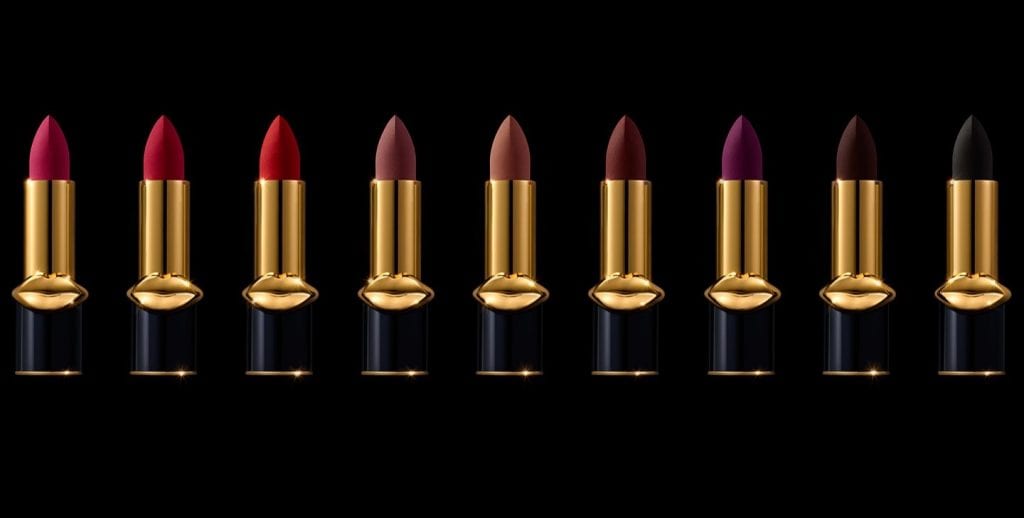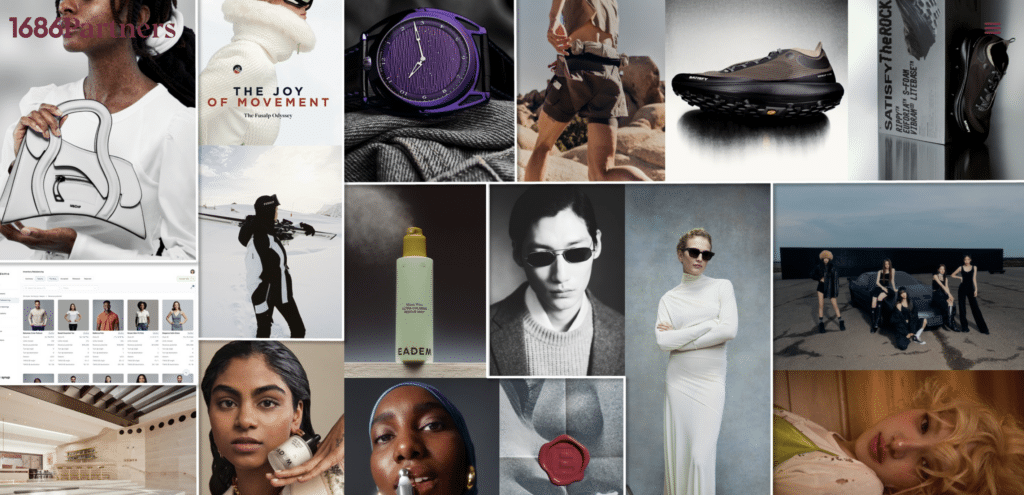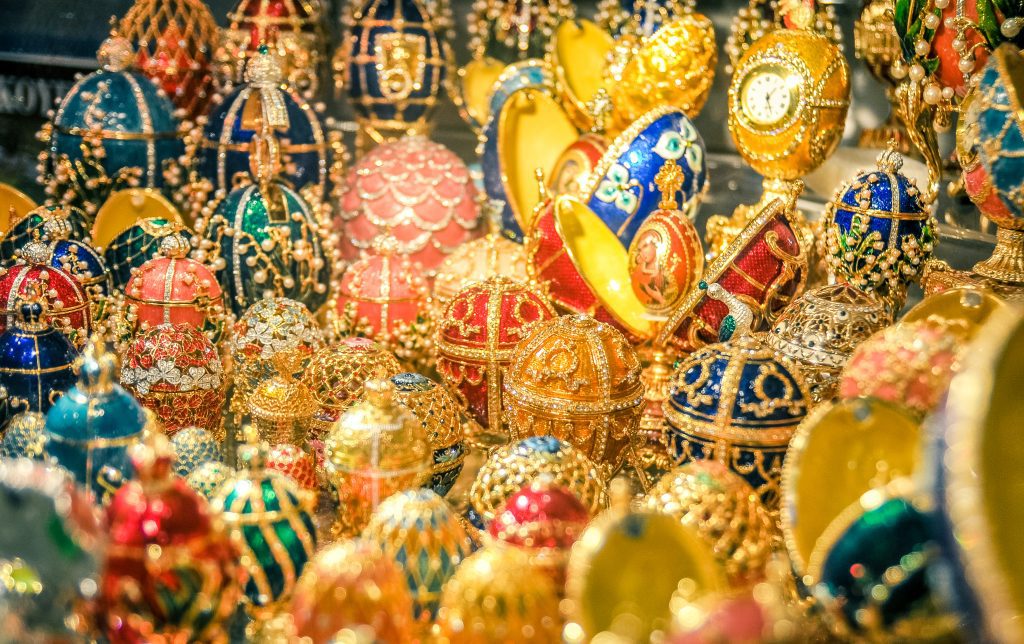By virtue of her work, Pat McGrath can almost exclusively be found behind the scenes. She can be seen slipping in and out of the hidden-away backstage areas of fashion shows, situated firmly away from the camera at shoots for ad campaigns and glossy magazine covers, and with a few notable exceptions, she is out of sight of the eyes that ogle at awards shows’ red carpet arrivals. It is against this background that over a period of almost three decades, McGrath has come to occupy the undisputed role as an irreplaceable figure in fashion and beyond, or as Condé Nast artistic director, Anna Wintour has put it, “She is the most influential makeup artist in the world.”
In her trademark black headband, pushing back her dark hair to reveal a naturally made-up face, and a uniform of all-black apparel, McGrath has – in a remarkably quiet way – built up a body of work that is by all other accounts, far more likely to be a “who’s who” dossier of global fashion brands, publications, and celebrities than what could possibly amount to any one individual’s roster of clients.
Yet, since she first started dreaming up beauty looks for i-D magazine editorials in the 1990s, otherwise an outsider to the industry at the time without any formal makeup training or friends in high places to help her along, McGrath – and her tour de force of skill and passion – has won over the trust and respect of some of the industry’s foremost creatives, whether it be photographer Steven Meisel, designer John Galliano, or the now-reigning editor-in-chief of British Vogue Edward Enninful, whom she first worked with at i-D almost 30 years ago, back when they were both first getting their feet wet in the industry.
Now, 53-year old Pat McGrath has her hand in what Vogue editor Sarah Brown calls “90 percent” of the global beauty trends. In other words, what McGrath does – or does not do – with makeup impacts the business of brands across the globe and the faces of consumers, too.
With the title of fashion’s most in-demand makeup artist and a team that has swelled to nearly 100 different makeup artists to help her carry the load (both figuratively and literally, McGrath is known to travel with as many as 87 trunks of makeup during fashion month, after all), Ms. McGrath is tasked with crafting the beauty looks for approximately 80 of the industry’s most heavily-watched runway shows each season. If you can think of a particularity striking makeup design that went down the runway over the past 20 years, it was probably McGrath’s handiwork.
The show-stopping Egyptian goddess-inspired gold eyes on John Galliano’s Dior Couture Spring 2004 runway? Pat McGrath created those. The bold, bright eyes and perfectly neon lips that models displayed for Raf Simons’ Dior couture debut in 2012? Those were hers, as were the breathtaking bedazzled lips a year later. The sequin-and-Swarovski crystal encrusted faces of the Givenchy Spring/Summer 2014 show? McGrath was behind those. The David Bowie-inspired looks for Margiela’s Spring 2016 couture show? Yup, those, too.
Off of the runway, McGrath’s signature can be found in the most high-fashion, high-dollar ad campaigns – from Versace and Prada to Gucci and Louis Vuitton; in the DNA of some of the market’s most widely-purchased beauty brands, including those on the roster of Proctor & Gamble, such as CoverGirl, as well as the upmarket beauty collections of Giorgio Armani, Dolce & Gabbana and Gucci. Still yet, her touch can quite literally (she prefers to use her hands to apply makeup as opposed to brushes) be found on the primped faces of some of Hollywood’s biggest stars on some of Hollywood’s biggest nights.
British-born McGrath credits her late mother Jean – who moved from Jamaica to England, where she would give birth to and raise Pat and her 2 siblings – as inspiring her love of makeup and teaching her the ropes beginning at a young age. “She always put on a full face of makeup,” McGrath has said of her mother. “It is where I got my makeup tips from – at seven years old!”
Together, they would “analyze the makeup looks of Old Hollywood film stars and identify what had inspired runway makeup each season.” Jean would teach her makeup-obsessed young daughter how to mix eye shadow with foundation to create a shade dark enough for her skin, something that, as Linda Wells, Revlon’s chief creative director, writing for The Cut a few years ago, says, “wasn’t well served by cosmetics companies at the time.”
McGrath would do her homework, as well. “Every day after school, [she] plunked herself down on the floor of the local newsstand, paging through the glossies,” according to Wells, entranced by the beauty looks.
A long way from her early days at the newsstand, McGrath, who is based in New York but travels more throughout the year than she ever stays put, has morphed into a bona fide beauty legend, with industry awards, no shortage of titles (beauty editor-at-large for British Vogue comes to mind), and an MBE, an honor bestowed upon her by the Queen of England for her contributions to the arts, to show for it.
More than that, McGrath has something else on her plate, adding the role of major player in the nearly $500 billion global beauty goods industry to her already-extensive repertoire in October 2015 when she debuted Gold 001, a $40 limited-edition pigment product, exclusively on her website. Her cult-following pounced. Without any of the coordinated marketing efforts or over-the-top self-promotion that have come to dominate modern-day product launches, Gold 001, the first product from her Pat McGrath Labs label, sold out in six minutes, with a whopping 200,000 people vying for the 1,000 units up for sale.
It was swiftly followed up by two more limited launches, one for her Phantom 002 pigment, and another for a highlighting kit, called Lust 003. With demand growing with each launch, McGrath ultimately introduced a core collection of color cosmetics – including lipsticks, lip liners, eyeliners, mascara, and eyeshadow palettes – in September 2016. In partnership with Sephora, the collection, which is a culmination, you could say, of more than 25 years of work and of at least two years of intensive research and development period, hit stores – and McGrath’s own site – a month later.
It was hit. The Pat McGrath Labs collection reached “top-selling SKU status [at Sephora] and attracted a reported 30 billion social media impressions” on the heels of its debut, per Fashionista, outpacing both more famous and more established brands.
As WWD noted in August 2017, in reflecting on the immediate demand for McGrath Labs products, the highly-reputed makeup artist “pioneered a new way to build a beauty brand: one that’s born online with the majority of distribution remaining direct, coupled with strategic wholesale partnerships or branded pop-ups to support an overwhelmingly online business.” And while McGrath, herself, was unwilling to speak about financials, WWD cited experts estimates that brand could bring in “as much as $60 million in retail sales within the first 12 months of the rollout of the core collection,” and “triple-digital millions in just a few years” thereafter.
To an extent, the smash-and-grab success of McGrath’s venture has been somewhat muted in terms of mainstream media coverage due, in part, to the success of at least a couple of young-but-big celebrity-owned beauty brands, namely those bearing the names of Rihanna and Kylie Jenner. Nevertheless, that has not stopped McGrath from hitting major milestones. In fact, just this past summer, McGrath Labs announced that it had secured a $60 million minority investment from New York-based Eurazeo Brands, a deal that brought the valuation of the 3-year old company to a staggering $1 billion.
“Part of the appeal of McGrath’s venture has to do with her reputation as one of the most influential makeup artists on the planet,” Allure’s Baze Mpinja stated this summer, emphasizing the power – and prestige – of this woman’s name to those who have any familiarity with high-fashion makeup. Another key reason? “The passion and integrity that she pours into her products,” which include high-quality cosmetics and bold-hued pigments that she is dedicated to ensuring “work on all skin tones.”
“It has always been my dream to create an iconic beauty brand that goes beyond the usual limitations, that lives outside the parameters of what is expected,” the self-proclaimed “makeup nerd,” who obsessively studies films, art history and photography for inspiration, and mentors young makeup talents, said in a statement coinciding with this summer’s fund-raising announcement, which was a particularly striking one given the proven difficulty that women founders have in seeking venture capital funding; the odds of landing an investment shrink even further for women of color.
“It’s about pushing boundaries,” McGrath says. And that is precisely what she is doing … in more ways than one.














